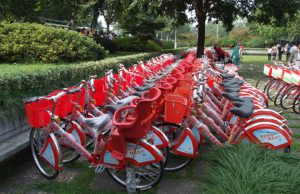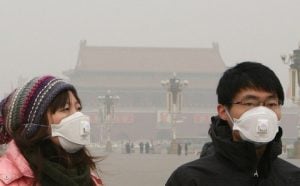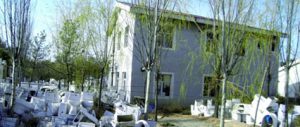Calthorpe Associates have projects in Kunming and Chongqing and jointly published, “Planning cities for people” a set of design principles for Chinese cities.
Tom Levitt: In the US, the car was once seen as a saviour of urban transportation. Would you now say it is more likely to be the enemy, particularly in terms of more sustainable development?
Peter Calthorpe: Well I think everything is fine until it is used too much. In the US, 85% of all trips are in cars – it’s too much. It has a huge economic burden, the middle class can’t afford to pay their mortgage. To own and operate a car in the US today costs more than US$5,000 per year. If you have a two or three-car household, it’s a bigger chunk of the household budget.
So there are big economic costs and then big environmental costs, which is obvious in terms of air quality and climate change, imported energy and all sorts of other things. But then there is also a social cost, which is the degree to which it seems to isolate people. You end up in communities where people have less and less interaction. And you can see that happening in China, where they are building these super blocks, which isolate people in very high density and in America’s case very low density. In both cases the isolation means you have to get into a car to get anywhere.
It used to be in Chinese cities that people could walk or bike, use buses; and they still do to a very high extent because many can’t afford it. But as car ownership grows, the congestion levels are getting to be unsustainable.
You cannot build a high-density city and run it on cars – it is just physically impossible. We have a hard time making it work for low-density cities and we still have congestion anyway. So the path of China, focusing on circulation system of cars is really not going to succeed on the long run.
TL: Do you think this is understood and accepted within China?
PC: There is a real push and pull on the whole thing. On the other hand they know that they cannot dump more cars on the streets. In Beijing, they have gone to annual quotas to limit the number of cars that can be sold in the city each year because they know that they cannot build enough roads to handle it all.
They have to shift back to transit and walking. And that makes for a healthier community and quite frankly a healthier population. But there is this counter force, which is the desire to have an auto industry and also this notion that somehow automobiles and being middle-class is synonymous.
TL: Has the speed of development in China now locked them into the car economy and made it more difficult to fix or switch?
PC: I think the problem, and because I’m an urban designer I tend to see things this way, is the way they are shaping their cities. You can have cities that work fairly well for cars but are also really great places to walk, bike and use a transit system. It is about creating a balance that is healthy.
I don’t think we’re going to get no cars but it’s the quantity of cars, and the quantity of car usage that has to be mitigated. And if you build mixed-use environments with human scale streets, all of a sudden, you can get environments where people are just as comfortable walking, biking or using transit as they are in getting in their cars. They have a real choice.
Read also: World’s biggest eco-toilet project ends in failure
Somehow China got off on to this thing of replicating Chang’an, which is the grand boulevard that runs east-west through Beijing, 8 to 10 lanes wide. Why? Because it is a great grand place for military parades but it’s death defying for a pedestrian to get across. And ironically, even though it has all those lanes it doesn’t move automobiles very effectively. What we have discovered is that a fine grain of lots of parallel small streets always works better than a few large streets. You add a more intelligent street network and put that together with mixed-use environments, where people don’t have to go great distances for their daily needs and you create a healthier city.
TL: Do you think there is anything China can learn from other countries?
PC: Yes, I think it is now really easy to document that the most valuable real estate on the planet is “walkable urbanism” – great city centres that are very convivial to walk in and are very high density. We seem to think in the US that the high-value real estate is always in the suburbs, but on a per square foot basis people will spend more money to have a house in San Francisco where it is mixed use and is walkable than they will spend in a gated community out in the suburbs. In many cases it is almost 2:1.
So the marketplace already values great urban environments. They have to be great, they can’t just be slabs of apartments, isolated from any kind of street life, local community and civic destinations. It is a complex matter, it is not just about density but, about the quality of city life.
TL: How much of this experience is transferable to china?
PC: I think a lot of it is, not because it’s transferable but because it is apparent. Before this latest round of super block construction, the historic city tradition was very much about walking and biking, local community services, mixed use small shops always along the way everywhere and very human scale community-gathering places. It’s only in the last 10 years they have embarked on this massive growth programme.
Prior to the revolution, China was influenced in its urban design by Europeans and they built great urban centers. Shanghai, for example, is exactly like Manhattan – they are great places to live and walk. Then, after the revolution, came the soviet model in which your whole life existed in one super block. So the factories, the schools, the housing, the parks, the clinic was within this one block and you kind of lived in this commune, as it were. And that established an urban form that was quite foreign to the history of cities in China.
Read: residents of low carbon-cities find it hard to change bad habits
What was fascinating about that stage is that it was very mixed use. People didn’t have to, well they didn’t own cars, but they didn’t need them because everything was at their doorstep. They kept on with these super blocks, but instead of mixed use within the super block they had single uses. So you have a whole super block as an office building or slabs of residential or industrial buildings that were all separated and then they became more and more separated, which led to greater and greater commute lengths. And that’s the situation they are in now. High-density isolated super blocks, generating travel needs that are unsustainable even by transit.
When you look at central business district in Beijing, they put so many jobs in one place that even with three or four subway lines, those are overloaded because everyone is going in the same direction at the same time. A much healthier pattern, of course, would be to decentralise jobs along the transit systems so that the travel is in all directions.
TL: What do you think can be done in existing cities, can they be re-engineered?
PC: Everything they rebuild, can and should be mixed use, so that local destinations are close at hand. Everything they rebuild in the cities should be served by new subway lines which, given their capital investments isn’t difficult.
One of the biggest battles that we have is against their impulse to create these big commercial centres over and over again. It looks good politically, looks like they are growing the economy etc but, the more you concentrate jobs in a few major centres, the more transportation problems you have.
They need to get a good jobs-housing balance as they re-develop a city. Redistribute the jobs or build the new jobs in more human-scale clusters and surrounded by housing, so that in every sub-regional part of the city you have good healthy jobs-housing balance and people aren’t travelling from one end of the city to another to get to work.
TL: What kind of lifestyle do people aspire to in China?
PC: People’s dreams and lives are complex. In different phases of life you have different dreams. When you are young, single or just starting out you love the idea of being in a city. As you get older and get kids you are really concerned with safe communities, walkable places and good schools. And as you are older you also don’t want to be isolated.
Also read: The boom and bust of China’s bike-hire schemes
I think the dream changes over the life-cycle, so that’s one thing to keep in mind. The second is there are great urban forms that satisfy all those. In other words, family life is where everybody thinks you have to go to the suburbs. But you can have great parks, schools and communities in cities in a way that can become much more desirable than being isolated in the suburbs.
I don’t think that just picking the American dream and transferring it to China is appropriate or is even going to work. The Chinese have a much stronger tradition of street life, they love to spend time on the street. There are lots of spontaneous performances and people playing games in cafes. The tradition of street life is a very important component of well-being in China. I think that gives them a natural bias towards good urban environments as opposed to suburban environments.
TL: Given that it has its own unique characteristics, do you think a new era of mobility could emerge in China?
PC: Yes, I do. It’s fascinating when I go and present these ideas and these plans around China, everybody seems to immediately agree. They do feel that a loss of street life and local community is a big loss. Once people understand that urban form either contributes or damages those possibilities, they say: “oh my god, lets do this”.
For example, in Chongqing the mayor asked us to completely change the plan that they had under construction. And that was a manifestation of how obvious it is when you explain what the trade offs really are. The same amount of development and the same amount of investment can produce two profoundly different physical environments. There is no question that they always seem to prefer the one that re-engages human scale and street vitality.
Also, I think with the air quality impacts and congestion levels in the big cities, they seem to understand that they have to do something dramatically different. They are already at gridlock. So they really have to re-think and they understand that. For them it is good news that at the same time that you solve the traffic problem you also re-establish communities.





